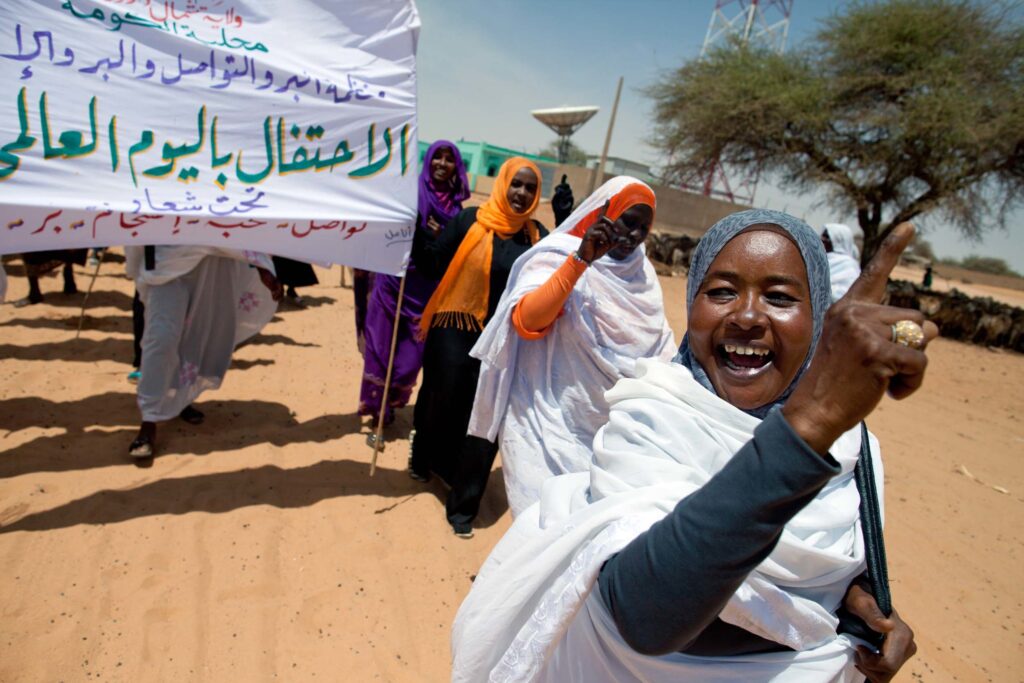
In 1977, the United Nations recognized March 8 as International Women’s Day. With its roots in the women’s labor movement, the day has become “a rallying point to build support for women’s rights and participation in the political and economic arenas,” according to the U.N.
International Women’s Day presents an opportunity to reflect on progress and regress in women’s rights around the world. Here are some of the past year’s highs and lows.
Afghanistan
Since the Taliban returned to power in Afghanistan, women and girls have been severely marginalized and repressed. But the United Nations Entity for Gender Equality and the Empowerment of Women (“UN Women”) – in partnership with Austria, Belgium, Norway, Spain, Sweden, and Switzerland – has been helping to rebuild the Afghan women’s movement, through assistance to local organizations advancing women’s education and entrepreneurship.
France
France this week became “the first country in the world to explicitly include the right to abortion in its constitution,” a BBC report notes. The vote in parliament was overwhelming: 780 for and 72 against. While France legalized abortion in 1975, the new constitutional amendment sends “a message to all women,” said Prime Minister Gabriel Attal, “[that] your body belongs to you and no one can decide for you.”
Iran
The 2023 Nobel Peace Prize was awarded to Narges Mohammadi, an Iranian women’s rights advocate imprisoned by the Iranian regime. The Nobel Committee lauded Mohammadi’s “courageous fight for human rights, freedom, and democracy in Iran.” The prize committee also recognized the Woman-Life-Freedom movement and “the hundreds of thousands of people who … have demonstrated against the theocratic regime’s policies of discrimination and oppression targeting women.”
Israel
U.N. experts are demanding accountability for reported sexual torture by Hamas fighters during the Oct. 7 terrorist attack. A March 2024 U.N. report documents a litany of abuses, including rapes followed by killings. Women have been the main targets of this violence, which is prohibited under international law, including the Rome Statute of the International Criminal Court. Palestine is a party to the treaty. The court has been investigating serious international crimes by Hamas and other Palestinian armed groups since 2014. The court has also been investigating possible crimes by Israeli personnel.
Palestine
U.N. experts also sounded the alarm about human rights violations against Palestinian women and girls, with reported extrajudicial killings by Israeli forces, arbitrary detentions, and sexual abuse. An estimated 9,000 women have been killed in Gaza since October.
Mexico
Mexico marked 70 years of women’s rights. Women in Mexico gained full citizenship in 1953 and in 1954 became eligible to vote and run for office. As of 2023, women held half of all seats in the Mexican parliament and half of all cabinet seats. In 2021, Mexico “became the largest nation to achieve gender parity” in government. Mexico City’s mayor Claudia Sheinbaum is a favorite to win the presidential election this coming June. If elected, Sheinbaum would be Mexico’s first woman and first Jewish president. Her campaign slogan “Es tiempo de mujeres” declares “It’s women’s time.”
Myanmar
The business network Women Transforming Myanmar is “empower[ing] women entrepreneurs and women leaders of micro, small and medium-sized enterprises to lead social change and create more equitable, inclusive businesses.”
South Africa
South Africa has one of the highest rates of violence against women. According to government data, “One in five (21%) partnered women has experienced physical violence by a partner.” The true percentage of affected women is likely higher, due to chronic underreporting. Women who do report violence often have bad experiences at police stations. In response, Ilitha Labantu, a local women’s group, is working with the South African Police Service to “standardiz[e] [gender-based violence] reporting desks in police stations, improve the experience of survivors when reporting cases, and ensure police have the necessary training to respond … to the needs of women and girls.”
Ukraine
The Russia-Ukraine war has had a disproportionate effect on Ukrainian women and girls. Since February 2022, “an estimated 3,238 women and girls have been killed and 4,872 injured; while 56 per cent of approximately 4 million internally displaced are women,” the U.N. reports. The U.N. further projects that “Over 8 million women and girls in Ukraine will need humanitarian assistance in 2024.”
United States
Since the Supreme Court overturned Roe v. Wade in 2022, the right to an abortion is no longer protected in the majority of U.S. states – and is now illegal in 12 states. In only 11 states has the right to an abortion been “protected by state statutes or state constitutions” and access been expanded. Troublingly, states that have made abortion illegal have their sights on additional restrictions on women’s bodily autonomy and personal agency.
As an example, the Alabama Supreme Court also recently ruled that frozen embryos are children. Families using in vitro fertilization and their health care providers risk legal penalties for disposing of unused embryos. Alabama is not the only state to redefine personhood. Georgia considers a six-week-old fetus to be an “unborn child.” The U.S. Supreme Court will have to decide more and more cases, as states test the bounds of a post-Roe era.
… and room for progress around the world
“Less than 1 percent of women and girls live in a country with high women’s empowerment and high gender parity,” new research by UN Women finds. The Women’s Empowerment Index (WEI) “focuses on measuring women’s power and freedoms to make choices and seize opportunities in life” and the Global Gender Parity Index (GGPI) “assesses the gender gap across four dimensions of human development: health, education, inclusion and decisionmaking.” More information on the WEI and GGPI and interactive data can be found here.



